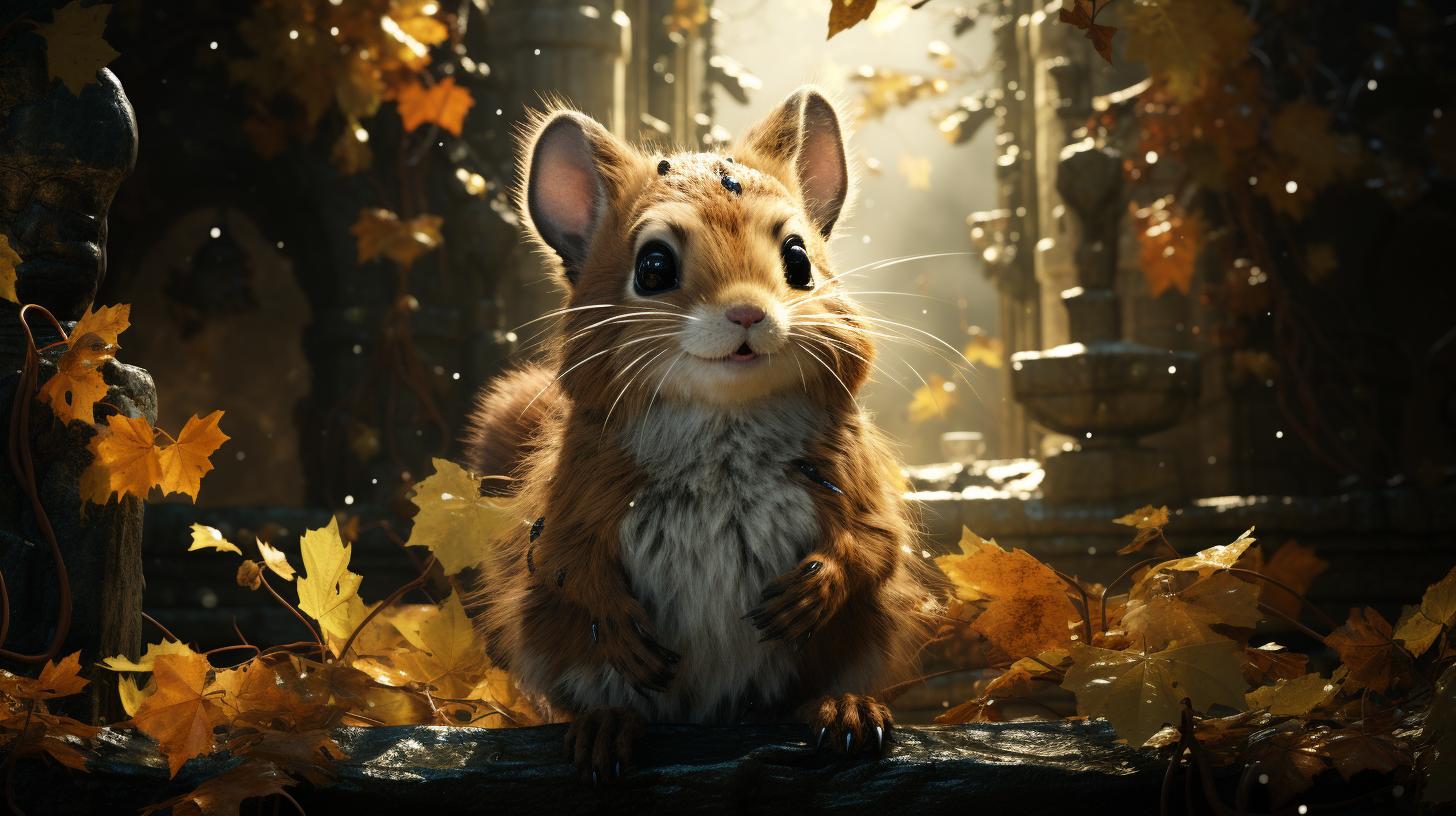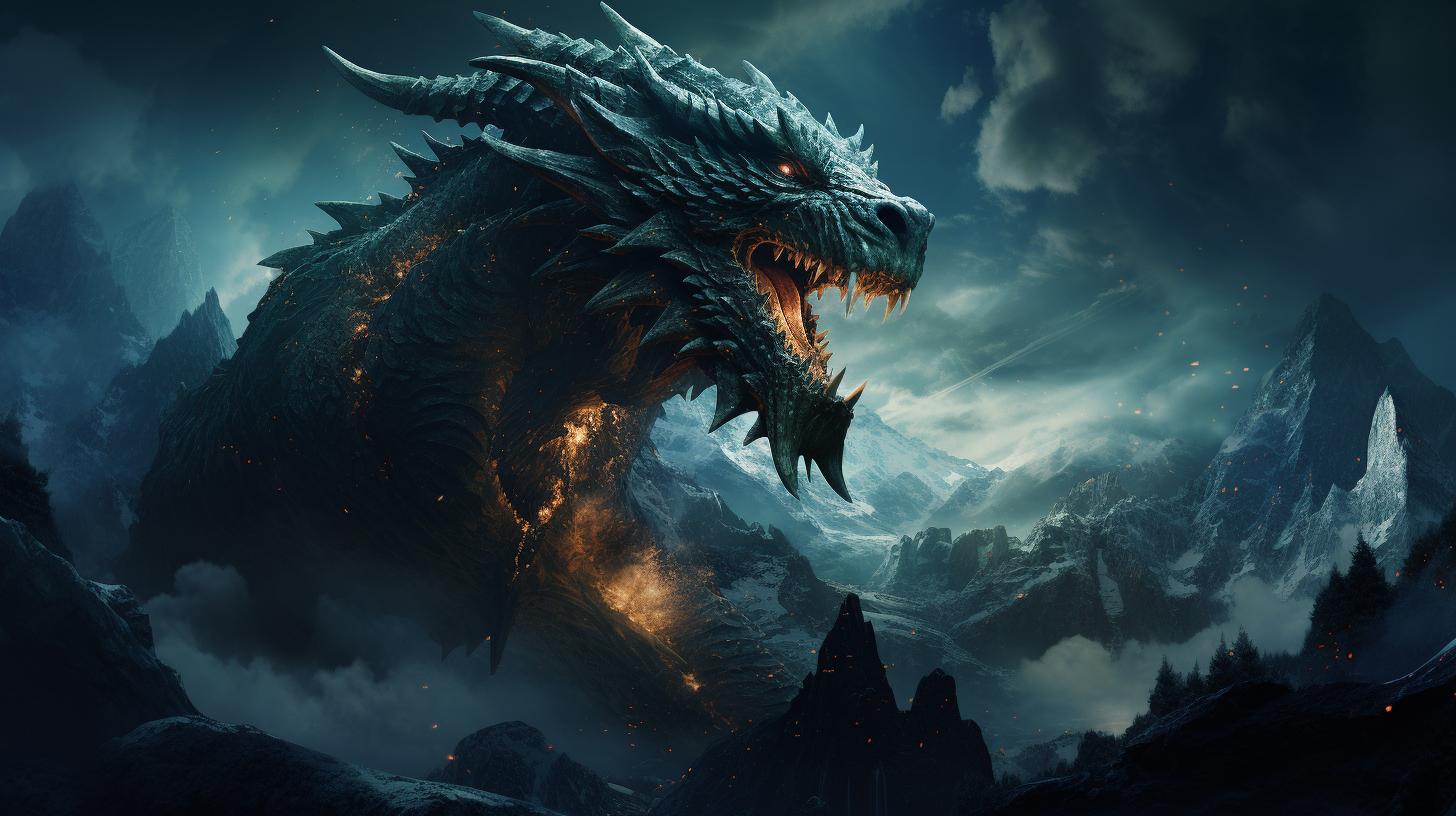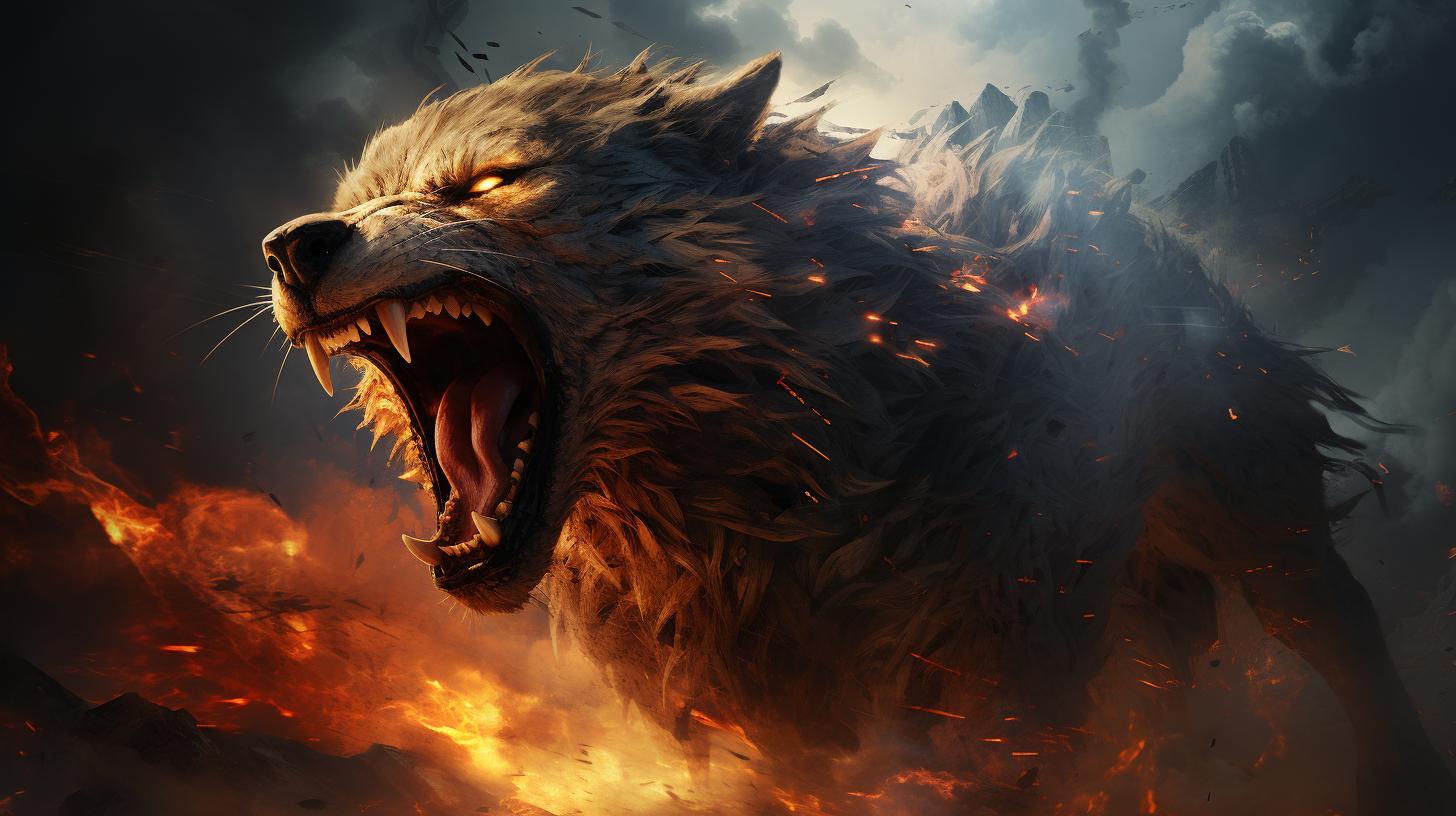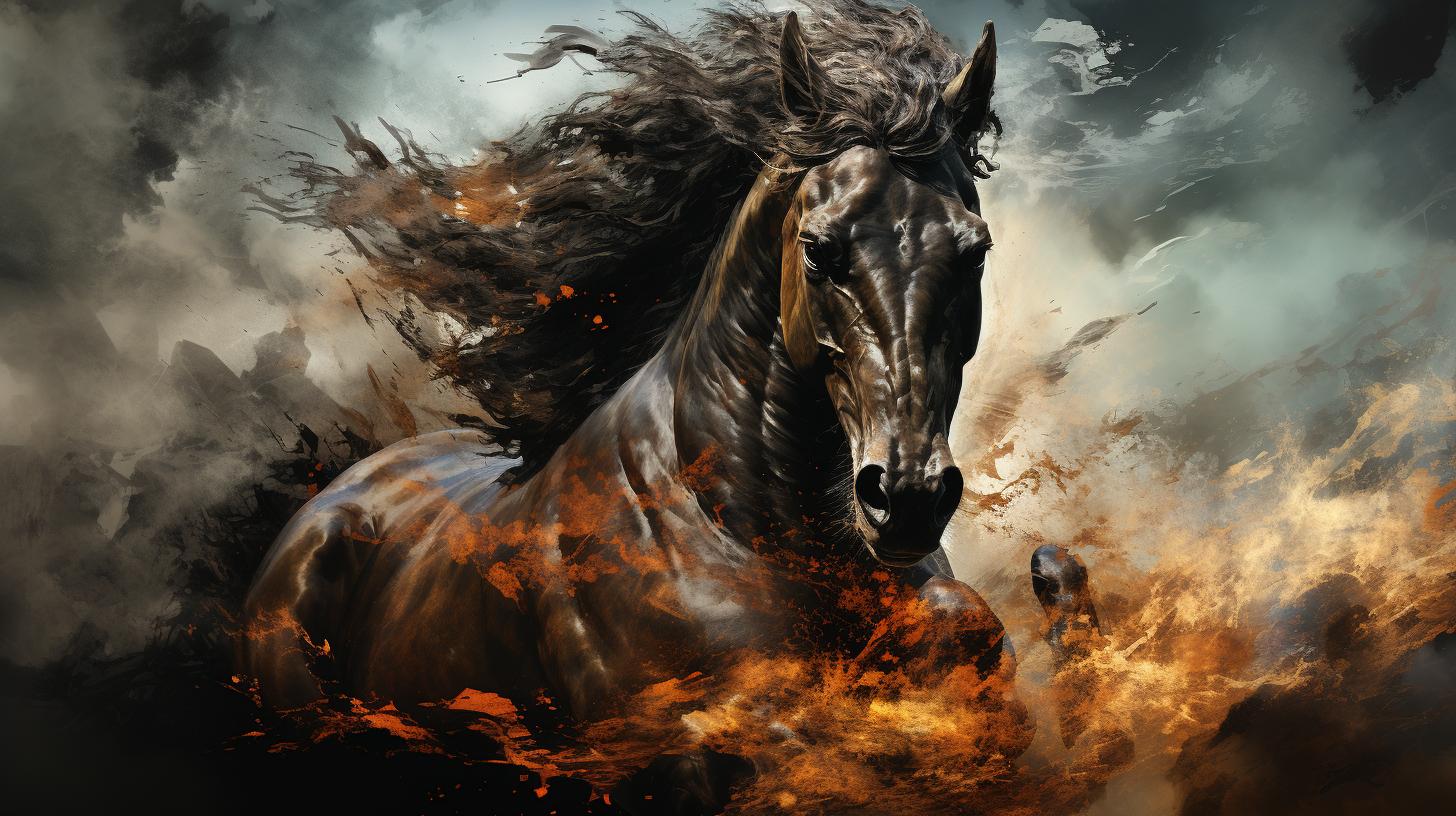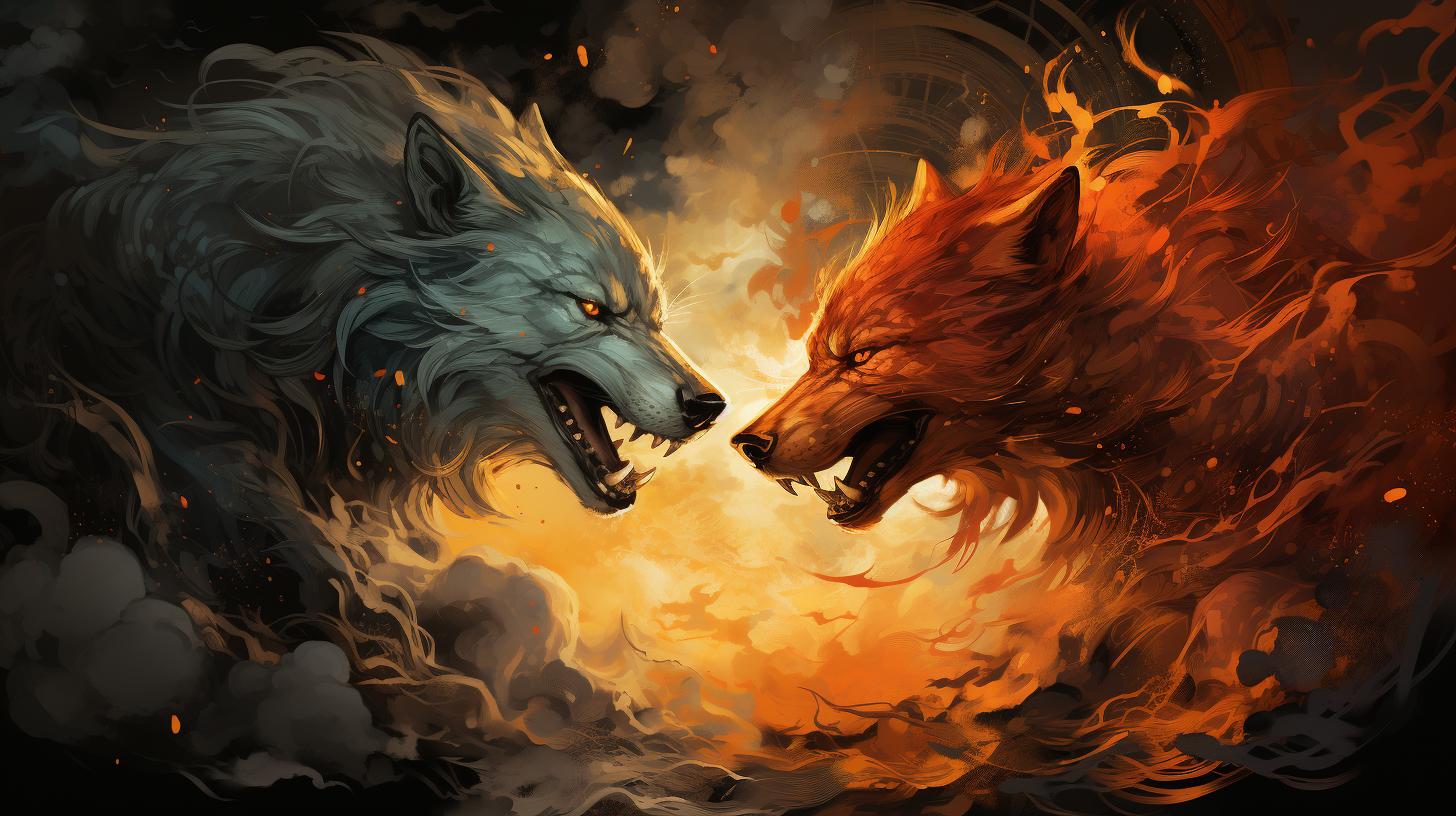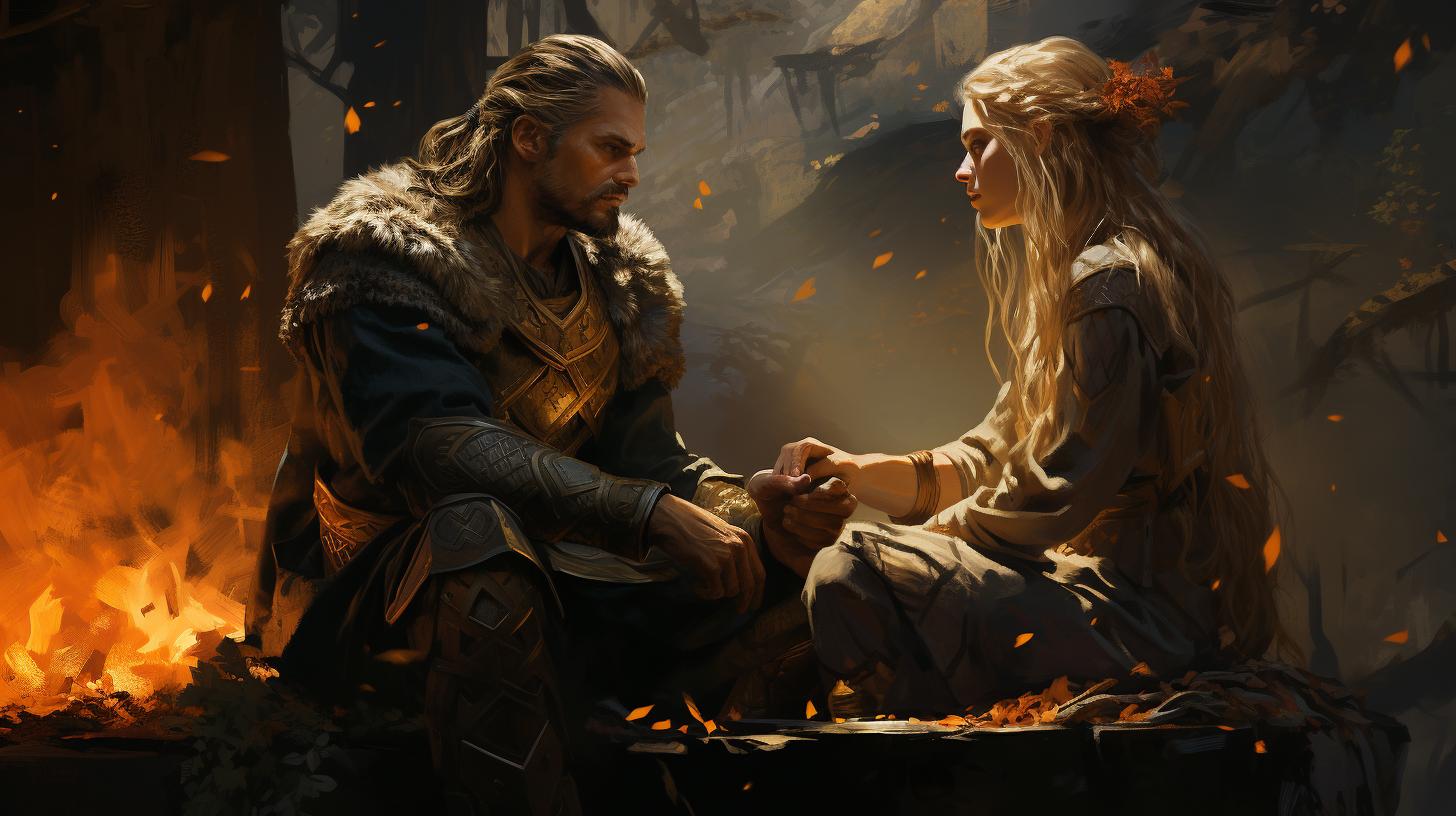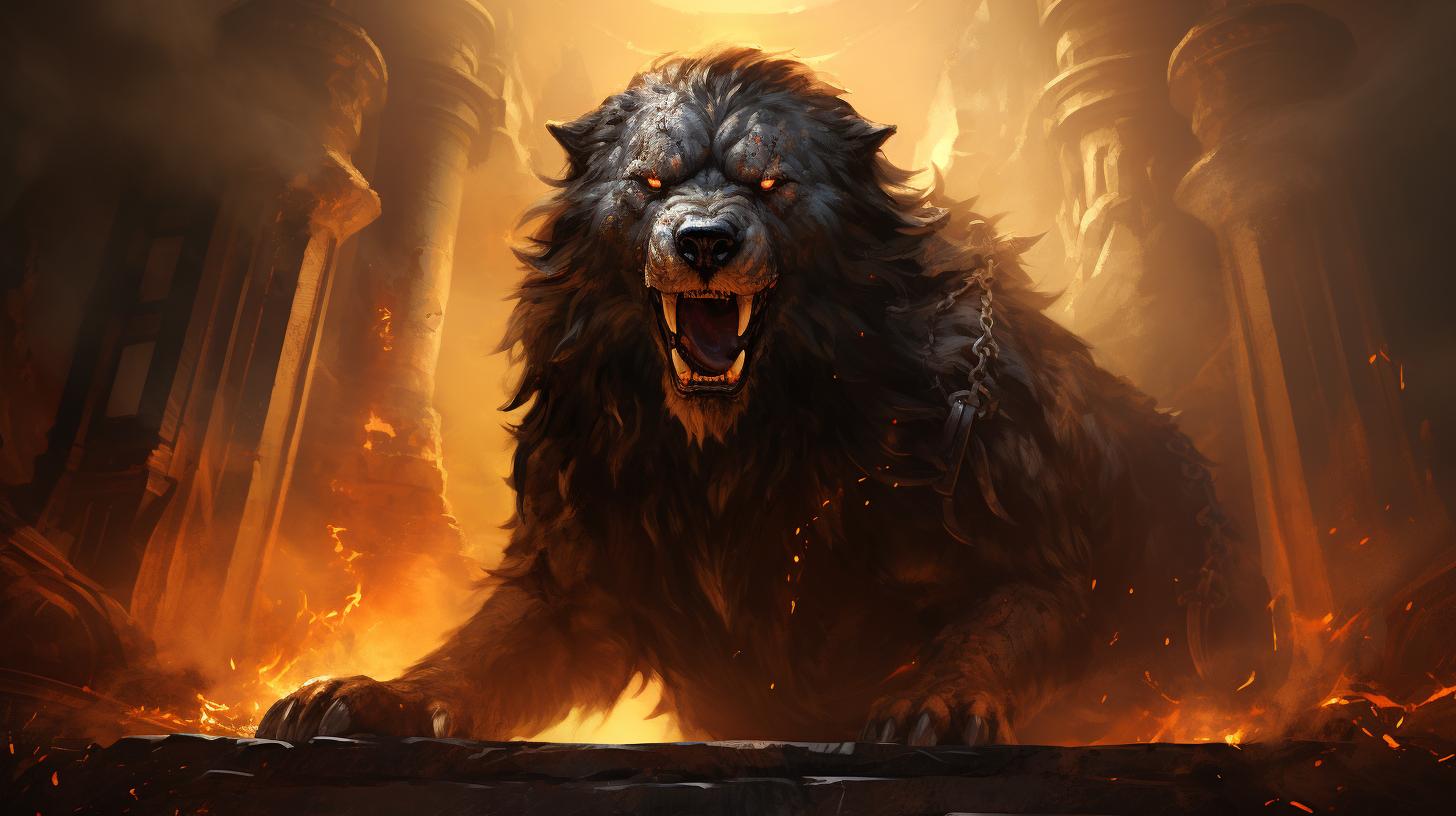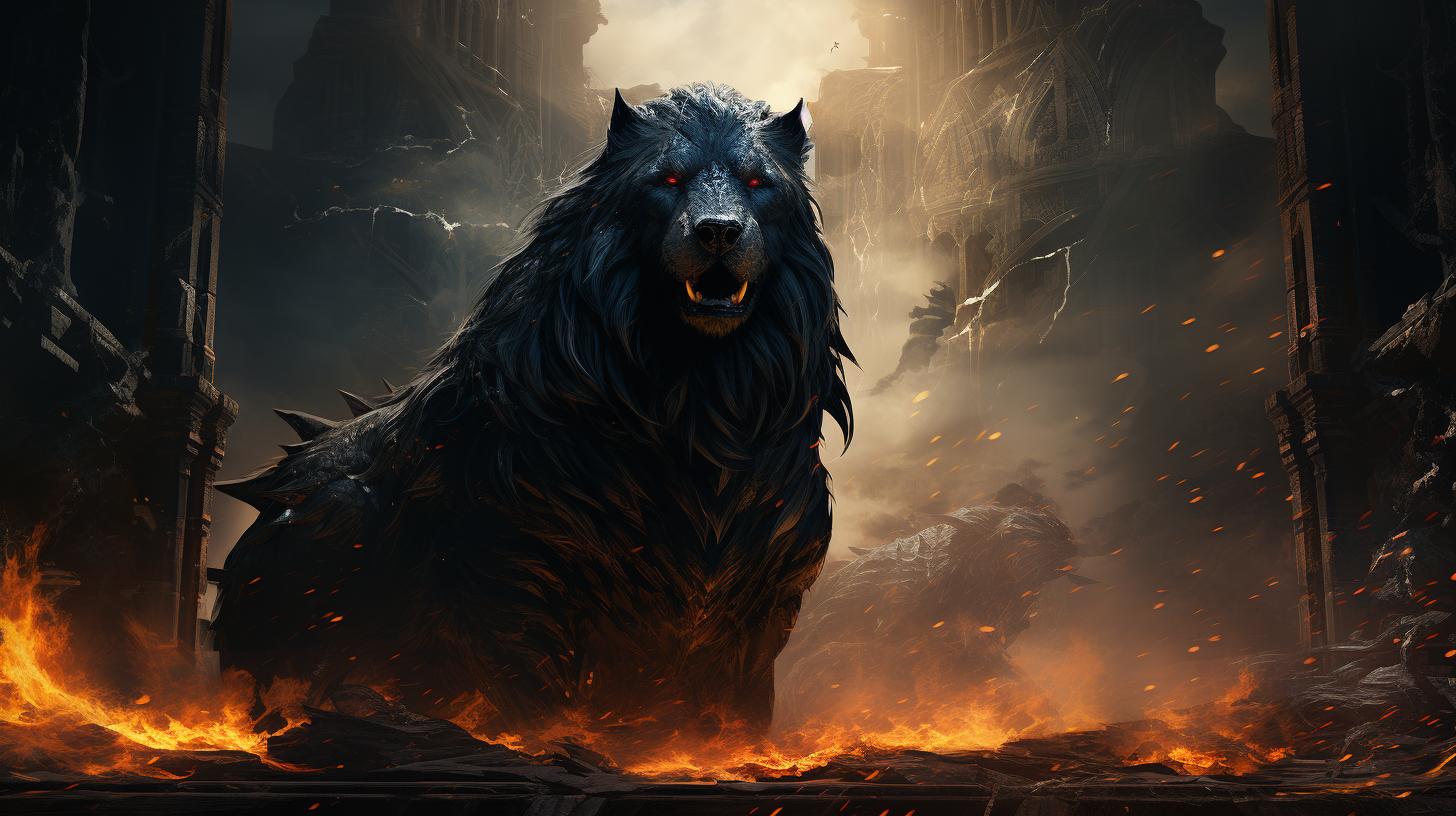Ratatoskr Norse Mythology: The Mischievous Messenger of Yggdrasil
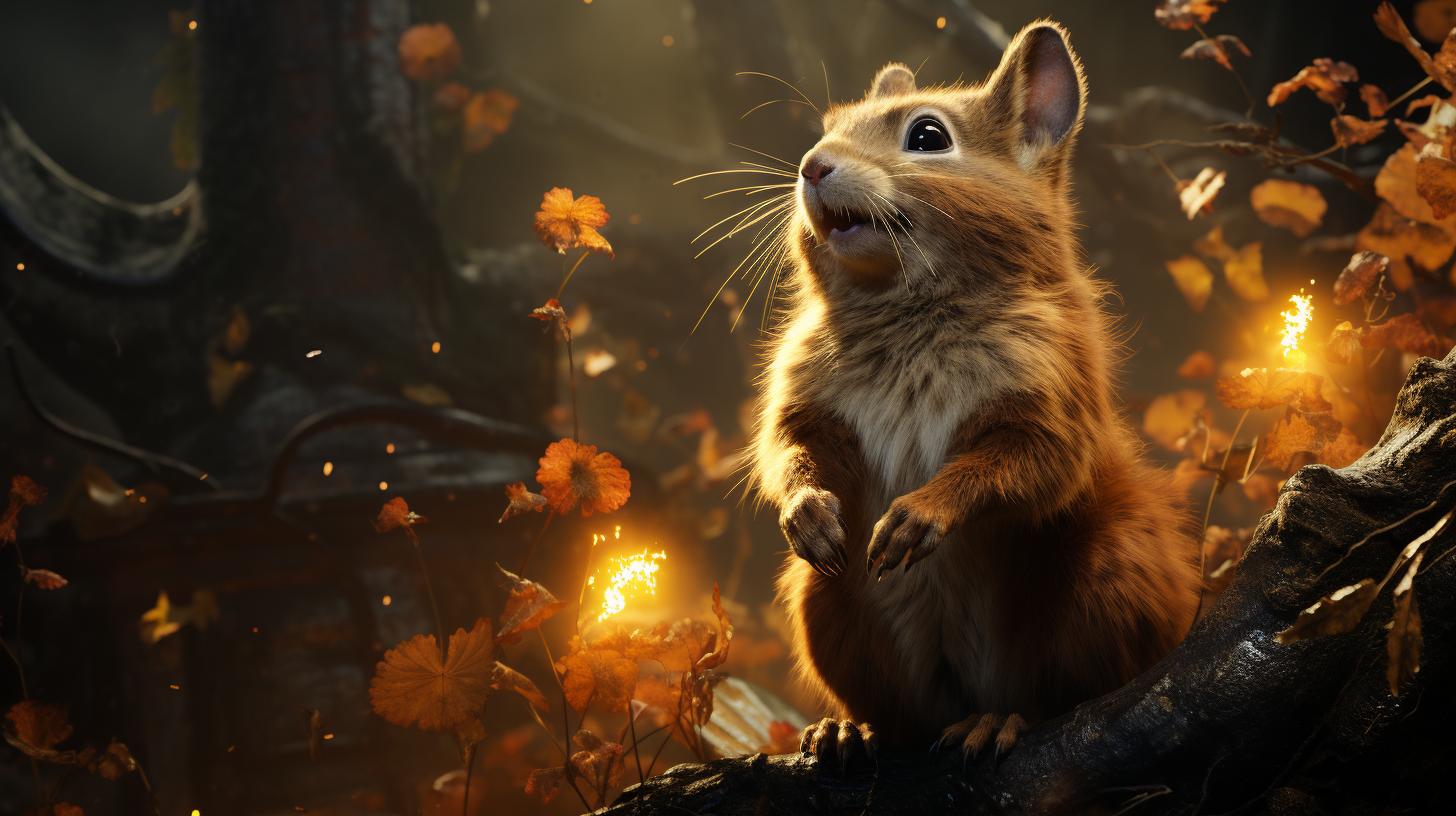
Ratatoskr, a mischievous character in Norse mythology, plays a significant role in the ancient tales. Living in the majestic Yggdrasil, the Tree of Life, Ratatoskr’s main task is to deliver messages and fuel the animosity between the eagle, Veðrfölnir, and the serpent-like dragon, Nidhogg. Descriptions of Ratatoskr vary, with most portrayals depicting a red squirrel.
Theories differ regarding Ratatoskr’s intentions, with some suggesting a desire to bring down Yggdrasil, while others believe it seeks to maintain balance. Ratatoskr’s cultural significance in modern literature and media remains evident, showcasing the lasting legacy of this character.
The Origins and Significance of Ratatoskr
Legend has it that Ratatoskr, a fascinating character in Norse mythology, holds a significant place in ancient tales. As we explore the origins and significance of Ratatoskr, we delve into the intriguing aspects of this mischievous creature.
Ratatoskr in Norse Mythology
In the enchanting realm of Norse mythology, Ratatoskr stands out as a captivating figure. Described as a mischievous messenger, Ratatoskr resides in the magnificent Yggdrasil, often referred to as the Tree of Life.
The Role of Ratatoskr in Yggdrasil
Within the sprawling branches of Yggdrasil, Ratatoskr takes on a pivotal role. Acting as a mediator between the eagle named Veðrfölnir and the serpent-like dragon called Nidhogg, Ratatoskr channels messages that fuel their animosity.
Ratatoskr takes delight in delivering both insulting and provocative messages, contributing to the conflict and suffering of the Great Tree of Life. As a cunning messenger, this feisty squirrel adds its own words to the messages, exacerbating the tension and further entwining the eagle and the dragon in their bitter enmity.
While the true intentions and ambitions of Ratatoskr remain subjects of speculation, various theories have emerged. Some suggest that Ratatoskr aims to bring about the collapse of Yggdrasil, potentially requiring the assistance of Veðrfölnir and Nidhogg. Others propose that Ratatoskr’s purpose is to maintain balance and stability within the realm of the gods.
Descriptions of Ratatoskr
In most tales, Ratatoskr is described as a red squirrel—an adorable creature that adds a touch of charm to its mischievous nature. However, it is worth noting that some ancient depictions present Ratatoskr with long ears or even a single horn atop its head.
These variations in representation may be attributed to the artistic stylings of different eras rather than precise descriptions.
Variations in Ratatoskr’s Depiction
Artistic interpretations and cultural adaptations have influenced the portrayal of Ratatoskr throughout time. From ancient artworks to contemporary renditions, Ratatoskr’s appearance may vary, taking on unique attributes inspired by different artistic and cultural perspectives.
- Theories on Ratatoskr’s Goals: Engrossing debates continue regarding Ratatoskr’s true intentions, ranging from its role in orchestrating chaos to its potential involvement in preserving the delicate equilibrium of the cosmos.
- Ratatoskr’s Relationship with Yggdrasil: The intricate connection between Ratatoskr and Yggdrasil, the sacred Tree of Life, remains a topic of fascination, further deepening our understanding of this enigmatic creature.
The Mischievous Nature of Ratatoskr
Ratatoskr, the mischievous messenger of Yggdrasil, plays a crucial role in fueling conflicts between the eagle, Veðrfölnir, and the serpent-dragon, Nidhogg. Known for delivering messages adorned with insults and provocative information, Ratatoskr delights in adding its own words to the communication.
Its actions contribute to the suffering and discord of the Great Tree of Life. Let’s explore the two aspects that define Ratatoskr’s nature further: its messages and manipulations, as well as its role in the feud between Veðrfölnir and Nidhogg.
Ratatoskr’s Messages and Manipulations
Ratatoskr acts as the intermediary of sharp-tongued words, relishing in feeding the animosity between Veðrfölnir and Nidhogg. It delivers messages laden with insults, provoking both creatures. Not only does Ratatoskr serve as a messenger, but it also manipulates the information it carries, adding its own words, further escalating the tension between the eagle and the serpent-dragon.
With every delivery, Ratatoskr stokes the fire of conflict, contributing to the chaos within the ancient tree.
Fueling the Conflict between Veðrfölnir and Nidhogg
Veðrfölnir and Nidhogg, two ancient inhabitants of Yggdrasil, deeply despise each other, and Ratatoskr takes pleasure in exacerbating their hatred. By intentionally carrying insults and provocative information between them, Ratatoskr actively contributes to their ongoing conflict.
The mischievous squirrel’s goal seems to be to keep the feud alive and thriving, ensuring that the enmity between Veðrfölnir and Nidhogg endures. Ultimately, Ratatoskr’s actions disrupt the harmony of Yggdrasil and perpetuate the suffering within its branches.
The Appearance of Ratatoskr
Ratatoskr, the mischievous messenger of Yggdrasil, is often described as a red squirrel in Norse mythology. However, depictions of Ratatoskr’s appearance vary, adding intrigue to the character’s visual representation.
Descriptions of Ratatoskr
According to most accounts, Ratatoskr is portrayed as a small and nimble creature with a reddish fur coat.
This depiction highlights Ratatoskr’s association with fire and mischief in Norse mythology. Its agile form represents the character’s ability to scuttle up and down Yggdrasil to carry and deliver messages.
Variations in Ratatoskr’s Depiction
While the majority of sources describe Ratatoskr as a red squirrel, some ancient depictions offer variations in its appearance.
In certain artistic representations, Ratatoskr is depicted with long ears or even a single horn in the middle of its head.
- Long Ears: Some artistic renditions portray Ratatoskr with elongated ears, which possibly signify the character’s heightened sense of hearing or supernatural abilities.
- Single Horn: In certain artistic styles, Ratatoskr is depicted with a single horn protruding from its forehead.
This artistic choice may symbolize Ratatoskr’s association with other mythical creatures or reinforce its mischievous nature.
It’s important to note that these variations in Ratatoskr’s depiction may be a result of different artistic interpretations of the character rather than an accurate representation from the mythology itself.
Exploring Ratatoskr’s Intentions and Ambitions
As a complex character in Norse mythology, Ratatoskr’s goals and ambitions have been the subject of much speculation and theorizing. Let’s delve deeper into the possible intentions behind Ratatoskr’s actions and its relationship with Yggdrasil, the Tree of Life.
Theories on Ratatoskr’s Goals
Various theories have emerged regarding Ratatoskr’s ultimate objectives. Some scholars suggest that Ratatoskr aims to bring about the collapse of Yggdrasil, leveraging the deep-seated conflict between Veðrfölnir and Nidhogg. According to this perspective, Ratatoskr seeks to exploit their animosity to weaken the ancient tree.
However, other scholars propose a different viewpoint, suggesting that Ratatoskr’s purpose is to maintain balance within Yggdrasil. They argue that the creature’s role as a messenger and provocateur is an essential element in the intricate web of interactions between the eagle and the dragon.
Ratatoskr could be seen as a necessary agent in preserving the delicate equilibrium of the Great Tree.
Ratatoskr’s Relationship with Yggdrasil
Ratatoskr’s unique position within Yggdrasil raises questions about its relationship with the ancient tree. Some speculate that Ratatoskr may be a guardian or protector of Yggdrasil, ensuring its stability and preventing external threats from taking root.
On the other hand, conflicting theories propose that Ratatoskr’s actions contribute to the deterioration of Yggdrasil, slowly eroding its strength and longevity. By delivering insult-filled messages and stirring up the animosity between Veðrfölnir and Nidhogg, Ratatoskr may unknowingly contribute to the metaphoric unraveling of the Tree of Life.
Although Ratatoskr’s intentions and its connection with Yggdrasil remain enigmatic, the creature’s presence within Norse mythology adds layers of complexity to the intricate cosmic web woven by the ancient Norse tales.
Ratatoskr as a God: Fact or Fiction?
Ratatoskr’s status as a god in Norse mythology has been a topic of debate among scholars and enthusiasts. While some argue for Ratatoskr’s divine nature, others question its true position in the pantheon.
The following explores the contrasting perspectives surrounding Ratatoskr’s godhood.
Debates on Ratatoskr’s Divinity
One perspective suggests that Ratatoskr possesses divine qualities and should be considered a god. Proponents of this view highlight Ratatoskr’s role as a significant figure in Norse mythology and its association with the sacred tree, Yggdrasil.
They argue that Ratatoskr’s ability to deliver messages between powerful creatures like Veðrfölnir and Nidhogg demonstrates its divine nature as a divine messenger.
On the other hand, skeptics challenge Ratatoskr’s godly status, considering it more of a mythical creature or a mere mischief-maker.
They point out that Ratatoskr’s role as a messenger and its involvement in instigating conflicts does not necessarily equate to divinity. Instead, they argue that Ratatoskr may serve as a symbol of chaos or a personification of discord rather than a god.
Ratatoskr’s Role in the Norse Pantheon
Regardless of debates on Ratatoskr’s divinity, its role within the Norse pantheon remains ambiguous. Unlike well-defined gods like Odin or Thor, Ratatoskr does not hold a prominent position in the hierarchy of deities.
Instead, it is often considered a minor or lesser-known figure.
Some interpretations see Ratatoskr as a representation of the complex and multifaceted nature of the divine in Norse mythology. As a messenger who thrives on discord, Ratatoskr embodies the unpredictable and nuanced aspects of the gods, adding depth to the overall pantheon.
However, due to the scarcity of explicit mentions of Ratatoskr’s role or worship in ancient texts, it is challenging to conclusively determine its place in the Norse pantheon. The lack of concrete evidence contributes to the ongoing speculation surrounding Ratatoskr’s divine status.
- The debates on Ratatoskr’s divinity:
- Proponents argue for its divine nature, highlighting its role as a messenger between powerful creatures.
- Skeptics consider it more of a mythical creature or personification of discord.
Conclusion:
While debates persist on whether Ratatoskr should be regarded as a god or a mischievous creature, its significance in Norse mythology cannot be denied.
Regardless of its divine status, Ratatoskr adds depth and complexity to the pantheon, representing the intricate nature of the gods and their interconnected relationships.
Comparisons between Ratatoskr and other Mythological Creatures
When exploring the rich tapestry of Norse mythology, it becomes apparent that Ratatoskr is not the only fascinating creature inhabiting the mythological world.
This section focuses on comparing Ratatoskr with two prominent mythological creatures, Veðrfölnir, the eagle, and Nidhogg, the serpent-dragon.
Ratatoskr vs. Veðrfölnir: The Eagle
Both Ratatoskr and Veðrfölnir reside within the same realm of Yggdrasil, the Tree of Life. While Ratatoskr serves as a mischievous messenger, Veðrfölnir takes on the role of a majestic eagle perched atop the branches of Yggdrasil.
Ratatoskr actively stirs up conflict between Veðrfölnir and Nidhogg, utilizing his messages to fuel their animosity. In contrast, Veðrfölnir remains aloof and seldom engages with Ratatoskr’s provocations.
Furthermore, Ratatoskr’s mischievous nature stands in stark contrast to the eagle’s stoicism.
While Ratatoskr delights in adding his own insults to the messages he delivers, Veðrfölnir remains composed and indifferent, seemingly unaffected by Ratatoskr’s attempts to incite further conflict.
Ratatoskr vs. Nidhogg: The Serpent-Dragon
In the realm of Yggdrasil, the other key character in Ratatoskr’s messages is Nidhogg, a fierce serpent-dragon.
Ratatoskr relishes in sowing discord between Veðrfölnir and Nidhogg, taking pleasure in delivering insults and provocative information from one to the other. The serpent-dragon, on the other hand, harbors a deep-seated animosity towards Veðrfölnir, viewing it as an enemy to be vanquished.
Ratatoskr’s nature differs significantly from that of Nidhogg. As a mere messenger, Ratatoskr uses his cunning and wit to further exacerbate the conflict between the two creatures, reveling in the chaos and turmoil he helps create within the Great Tree of Life.
- Ratatoskr, the mischievous messenger
- Veðrfölnir, the stoic eagle
- Nidhogg, the fierce serpent-dragon
Overall, Ratatoskr stands as a unique character in Norse mythology, using his role as a messenger to ignite conflict between Veðrfölnir and Nidhogg. His actions, though mischievous, play a crucial part in shaping the intricate web of relationships within the realm of Yggdrasil.
Ratatoskr’s Cultural Significance and Legacy
Within Norse mythology, Ratatoskr holds a lasting cultural significance and has left a profound legacy. This mischievous character continues to captivate audiences through its portrayal in modern literature and media. It is through these adaptations that Ratatoskr’s role as a messenger and instigator of conflict between Veðrfölnir and Nidhogg is explored further.
Ratatoskr in Modern Literature and Media
- Ratatoskr’s presence can be found in various works of literature, both within the context of Norse mythology and in modern adaptations. It has become a popular character, often depicted as cunning and quick-witted.
- Literary works, such as fantasy novels and comic books, have incorporated Ratatoskr as a nuanced figure, highlighting its ability to spark tension and add depth to the narrative.
- In modern media, Ratatoskr has made appearances in movies, TV shows, and video games, captivating audiences with its mischievous nature and unique role within Norse mythology.
Influence of Ratatoskr in Norse Mythology
- Ratatoskr’s influence extends beyond popular culture, leaving an impact on our understanding of Norse mythology itself.
- Its role as a messenger and provocateur highlights the complex dynamics within the mythological realm and the interconnectedness of beings residing in Yggdrasil.
- The character of Ratatoskr allows for exploration of themes such as manipulation, conflict, and the consequences of interpersonal rivalries.
- By analyzing Ratatoskr’s significance, scholars and enthusiasts gain insights into the intricacies of the Norse pantheon and the enduring relevance of these ancient tales.
In conclusion, Ratatoskr’s cultural significance and legacy are demonstrated through its representation in modern literature and media, as well as its contribution to our understanding of Norse mythology.
As this mischievous messenger continues to captivate audiences with its tricks and schemes, its lasting impact on both popular culture and the study of ancient myths remains undeniable.
.

